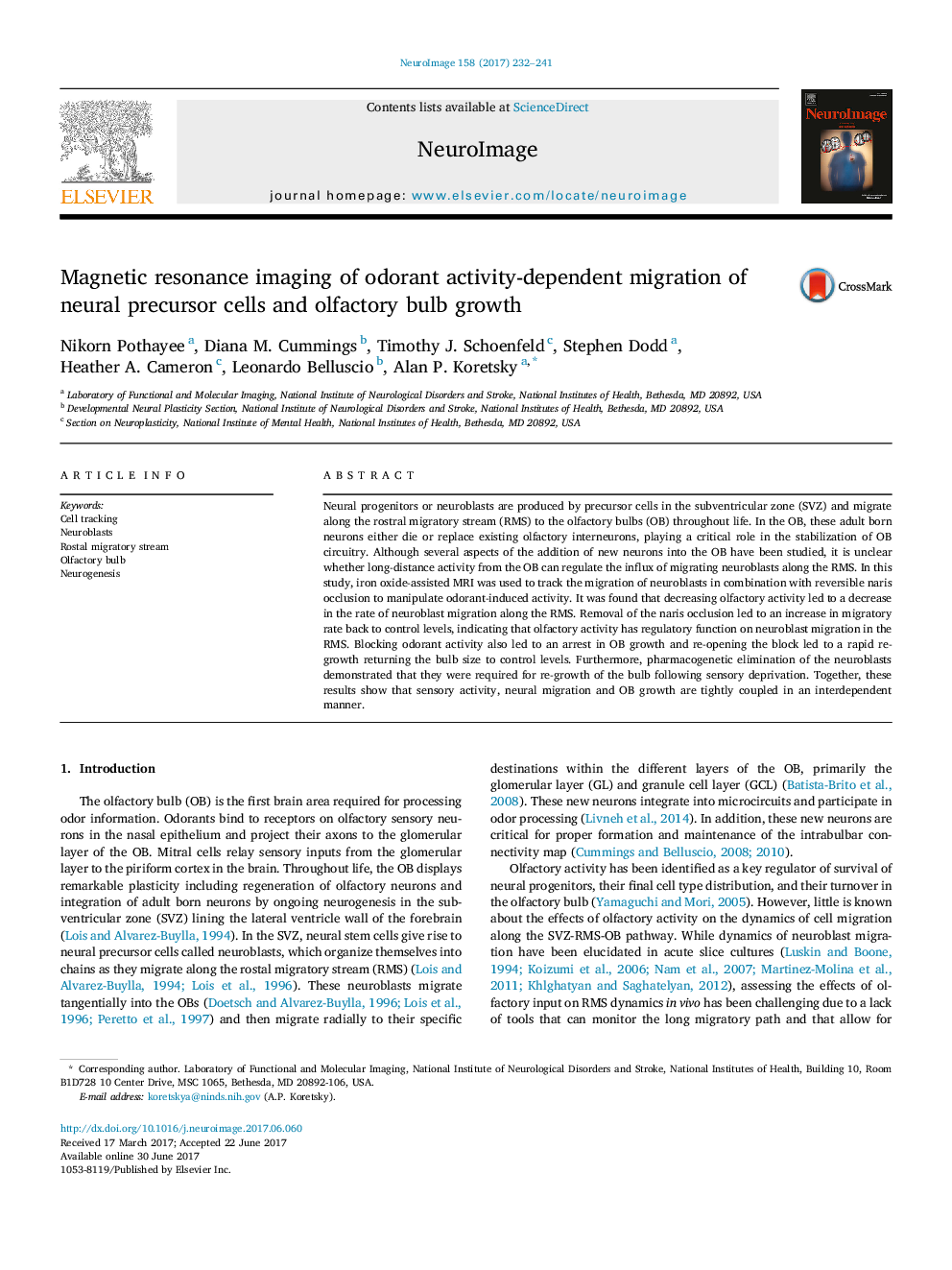| کد مقاله | کد نشریه | سال انتشار | مقاله انگلیسی | نسخه تمام متن |
|---|---|---|---|---|
| 5630978 | 1580852 | 2017 | 10 صفحه PDF | دانلود رایگان |
- MRI-based cell tracking reveals that odorant-induced activity can modulate migration rate of new neurons along the RMS.
- Reduced odorant activity can suppress OB growth in young adult rodents and return of activity can restore OB growth.
- Influx of new neurons is required for re-growth of the OB after restoration of olfactory activity.
- MRI cell tracking and anatomical measurement show tight coupling between olfactory activity, neuroblast migration rate, and OB growth.
Neural progenitors or neuroblasts are produced by precursor cells in the subventricular zone (SVZ) and migrate along the rostral migratory stream (RMS) to the olfactory bulbs (OB) throughout life. In the OB, these adult born neurons either die or replace existing olfactory interneurons, playing a critical role in the stabilization of OB circuitry. Although several aspects of the addition of new neurons into the OB have been studied, it is unclear whether long-distance activity from the OB can regulate the influx of migrating neuroblasts along the RMS. In this study, iron oxide-assisted MRI was used to track the migration of neuroblasts in combination with reversible naris occlusion to manipulate odorant-induced activity. It was found that decreasing olfactory activity led to a decrease in the rate of neuroblast migration along the RMS. Removal of the naris occlusion led to an increase in migratory rate back to control levels, indicating that olfactory activity has regulatory function on neuroblast migration in the RMS. Blocking odorant activity also led to an arrest in OB growth and re-opening the block led to a rapid re-growth returning the bulb size to control levels. Furthermore, pharmacogenetic elimination of the neuroblasts demonstrated that they were required for re-growth of the bulb following sensory deprivation. Together, these results show that sensory activity, neural migration and OB growth are tightly coupled in an interdependent manner.
Journal: NeuroImage - Volume 158, September 2017, Pages 232-241
